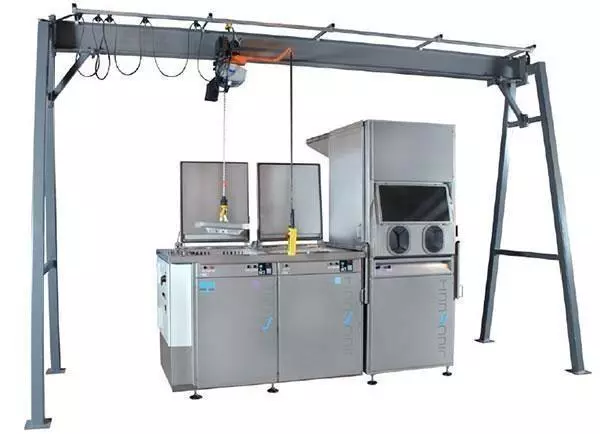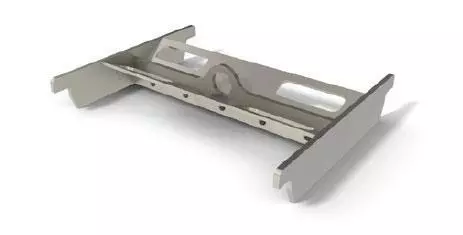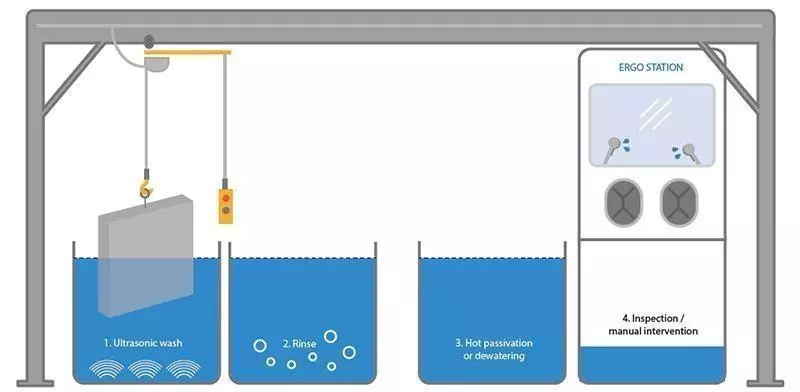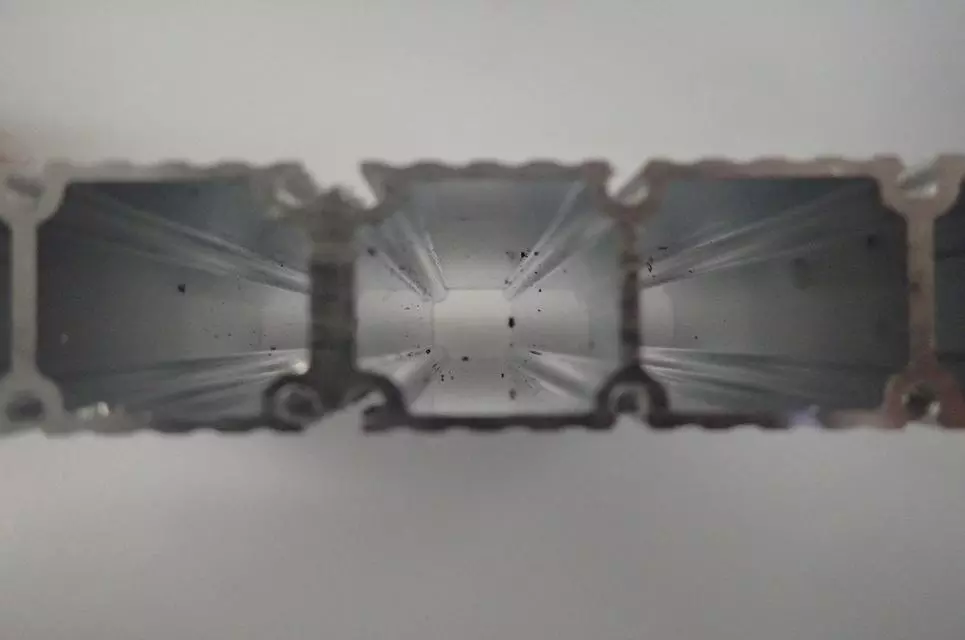Extrusion Die Cleaning: Effective Techniques for Mold and Die Cleaning
In industrial maintenance cleaning of production equipment, ultrasonic cleaning has become a widely used technology due to its numerous benefits. One of the most demanding cleaning processes is die cleaning, which requires a thorough and efficient approach. Ultrasonic cleaning machines offer a reliable and efficient solution to this task. Conventionally, the cleaning of extrusion dies, press tools, molds, and other production equipment is a labor-intensive and time-consuming process that often involves mechanical and manual cleaning methods. These traditional cleaning methods can be abrasive and destructive to the surface of the mold, which can cause further damage. However, ultrasonic die cleaning combines chemical and mechanical cleaning to remove dry or wet contamination on metallic surfaces gently.
Ultrasonic cleaning machines operate by using high-frequency sound waves to agitate a liquid solution in which the parts are submerged. The agitation creates millions of tiny bubbles that implode, generating a cleaning action known as cavitation. This process is gentle and non-abrasive to the base material. Because the cleaning takes place in immersion, no operator is required in the cleaning process, which increases safety and saves time.
The applications of ultrasonic cleaning machines are vast, including plastic and rubber molds, cold forming press tools, die cast molds, extrusion dies for plastic and aluminum, and glass molds. These tools can be contaminated with oxides, gases, release agents, rubber and plastic residues, oil, scale, metal debris, grease, oil, gall, carbon, or graphite, depending on the application.
For extrusion die cleaning, an ultrasonic cleaning machine can remove machine debris and light surface contamination. The cleaning process involves a combination of a liquid detergent, ultrasonic cleaning, and an air bubble rinse. The tank is initially filled with tap water, and the cleaning solution is added and diluted to the required concentration. The extrusion die is placed vertically in the basket and cleaned in the ultrasonic for five minutes. Next, the die is rinsed for two minutes in tap water using air bubble agitation, and the die is dried in a hot air dryer for five minutes at 70°C.
Ultrasonic cleaning for die cleaning is a safe and efficient method that saves time and ensures the longevity of the mold. It is a gentle and non-abrasive cleaning process that can remove even the most stubborn contaminants from a variety of materials. Ultrasonic cleaning machines have become an essential part of industrial maintenance cleaning, ensuring that the production equipment is cleaned quickly, efficiently, and safely.

Options for Mold and Die handling
Molds and dies are critical components of the manufacturing process, and their cleanliness is vital to ensure the quality of the finished product. The washing process for these components requires careful handling to prevent damage and ensure a thorough cleaning.
Chain Hoist
The chain hoist is a ready-to-use floor-fitted hoist that makes purchasing and installation a straightforward process. Its ergonomic load handling capability allows for safe and efficient lifting of the mold and die parts during cleaning. The complete system is CE marked, ensuring it meets European Union safety, health, and environmental protection standards.

Lifting beam and basket for mold plates
A lifting beam or basket is a versatile option for supporting mold and die parts during the washing process. These tools are compatible with the support bars in the cleaning tanks and allow the hoist to detach and the tank lid to close during cleaning. The lifting beam is designed to support the mold using shackles, and its one-point lifting capability makes it a convenient option for handling with a chain hoist. The basket is also used to hold the mold or die using shackles and offers the same one-point lifting capability as the lifting beam. Both the lifting beam and basket are compatible with the support bars in the cleaning tanks, making them a flexible option for different cleaning setups.


Ergo Station
The Ergo Station is an innovation designed for the manual rinsing, flushing, drying, and inspection of dies and molds. This machine offers a high level of safety and ergonomics thanks to a fully enclosed, brightly lit, and ventilated working chamber. The operating process is safe and easy, as the parts are loaded through a sliding side door and supported with a hoist during treatment.
Die cleaning process
The die cleaning process involves several steps, including ultrasonic wash, rinsing, preservation, and inspection. The ultrasonic wash typically occurs at 80°C for approximately 5-15 minutes, ensuring a thorough clean of the mold or die. Rinsing with air bubble agitation for about 1 minute removes any remaining debris or contaminants. Preservation with dewatering or hot passivation for about 1 minute is an optional step in the cleaning process that prevents corrosion and ensures the longevity of the mold or die. Finally, manual intervention and inspection of the components can be performed to ensure that they meet the necessary quality standards.

Cleaning Aluminum Extrusion - Case Study
Aluminum extrusion is a manufacturing process in which aluminum is forced through a die to create specific shapes and profiles for use in various industries. However, the extrusion process can leave behind machine debris and light surface contamination on the extruded parts, which needs to be removed before the final product can be assembled.
Material: Aluminum
Component: Extrusion
Contamination prior to cleaning: Machine debris, light surface commination
Process for cleaning Extrusion:
Stage 1: 'Type N' is used for the removal of polishing compounds in ultrasonic or soaking processes. It is compatible with all metals except carbides and can be easily rinsed, leaving a bright and spot-free finish. In this case, the tank was initially filled with tap water and then diluted with a 3% concentration of 'Type N'. The extruded aluminum part was placed vertically in the basket and cleaned in the ultrasonic for 5 minutes at a temperature of 55°C. 'Type N' offers complete removal of polishing compounds, light oils, grinding oils, and fingerprints and is highly efficient on brushed, satin, and stippled parts with complex geometry.
Stage 2: After cleaning in 'Type N', the extruded aluminum part was rinsed for 2 minutes in tap water using the air bubble agitation feature. The air bubble agitation feature increases the efficiency of immersion rinsing, and the treatment timer controls air bubble agitation via a solenoid valve. The auto purge feature was also used to wash away 'Type N' detergent carryover. The auto purge feature adds fresh water automatically in conjunction with the treatment cycle by opening a solenoid valve. Excess water is led to drain through an overflow weir. Without this feature, the tank would quickly become polluted and would need to be drained, cleaned, and refilled to ensure rinse water quality is kept high.
Stage 3: The extruded aluminum part was then dried for 5 minutes at 70°C in the hot air dryer. Upon inspection, the results looked good, with no signs of any lapping residue and no oxidation. The remaining three parts were then cleaned as a batch with the same process time and parameters as above.
| Ultrasonic Cleaner | Cleaning Fluid | Temperature(s) | Concentration |
|---|---|---|---|
| Versa Genius+ 120 Ultrasonic cleaner 30 KHz | Type N | 55°C | 15% |
| Versa Genius+ 120 air bubble rinse | Tap water | 22°C | 100% |
| Versa 120 Genius+ Hot air dryer | N/A | 70°C | N/A |
Before cleaning Extrusion

After cleaning Extrusion

Cleaning aluminum extrusion is an important step in the manufacturing process to ensure that the final product is free from machine debris and light surface contamination. The process outlined in this case study using an ultrasonic cleaner and 'Type N' cleaning fluid, tap water rinse with air bubble agitation, and hot air drying proved to be effective in removing contaminants and leaving a bright and spot-free finish. The auto-purge feature in the tap water rinse step also helped to maintain the quality of rinse water by automatically adding fresh water and removing excess water through an overflow weir. The process can be easily replicated for batch cleaning of extruded aluminum parts.
